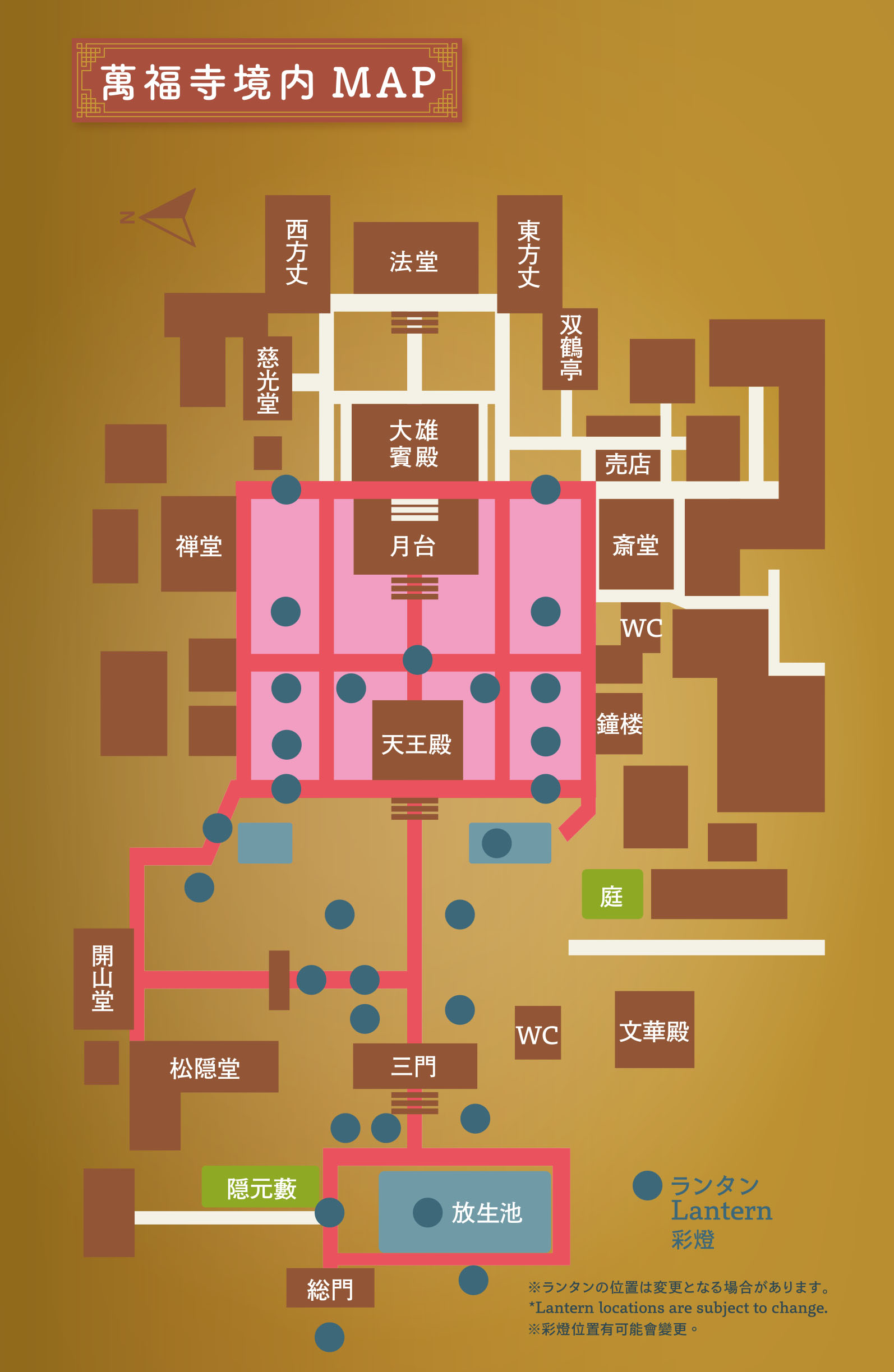Lanternfe introduction
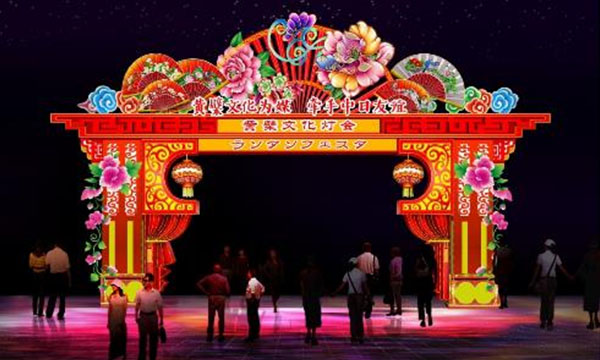
01Gate of Sino-Japanese Friendship
A paifang is a type of open gateway without doors, and is one of the traditional structures of Chinese architecture. Paifang can be found at Chinatowns around the world, including Yokohama and Kobe, making them one of the best-known symbols of Chinese culture overseas. This paifang is covered with carvings, fans, flowers and other colorful, beautiful decorations, it represents a gate symbolizing the friendship between China and Japan.
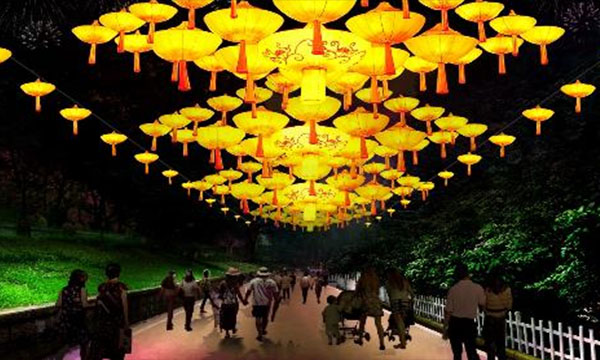
02As One Flesh
In this world, a single person is weak. The small individual lanterns around this represent human bodies, while the large lantern in the middle represents the regions or countries of the world. Bringing together the light and strength of individuals, it represents a galaxy where humans shine.
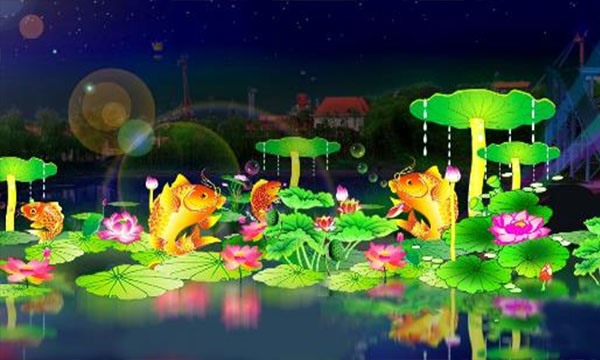
03Sacred Lotus Pond
Lantern lotus blossoms that bring a sense of the sacred blossom in the ancient temple. One of the best-known flowers of summer, lotus blossoms are also a symbol of Buddhism in the way they grow from mud yet are not stained by it. The fish on them also offer an incomparably beautiful scene.

04Full of Happiness
The character “福” or “happiness” is part of traditional Chinese culture, and often used when sending good wishes. The character “十” or “ten,” like a person standing with arms widespread, in the middle of the stage creates the character “福” with the lantern at the back. It refers to people gaining complete happiness.
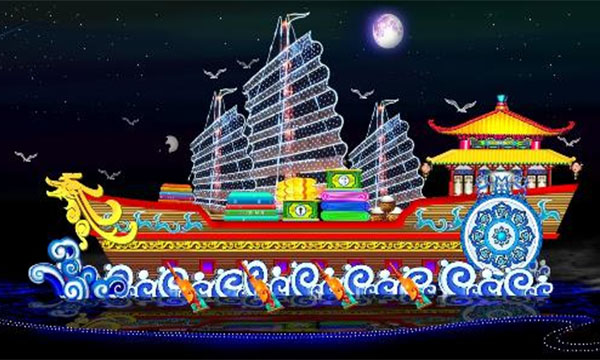
05Arrival of Zen Priest Ingen
The founder of the Obaku School of Zen in Japan, Ingen Ryuki (Ch. Yǐnyuan Longqi), was born in Fuqing, Fujian Province, in China. At the time, Obaku Zen was called as Rinzai Seishu Zen. In the early Edo period, Ingen set sail from Xiamen, accompanied by more than twenty disciples, after receiving a fourth invitation from Japan. They arrived at Nagasaki on the night of July 5, 1654. Ingen’s arrival in Japan also brought the advanced cultures of China to Japan, such as architecture, music, literature, sencha tea, fucha ryori cooking, and more, and had a profound effect on the world of Zen.
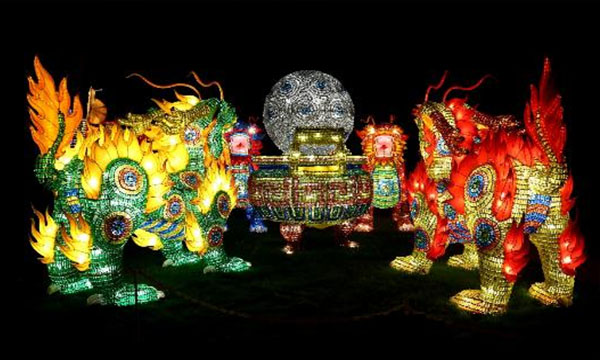
06Qilin
The qilin is a legendary creature that appears in Chinese myths. Originally, the “qi” was the male and the “lin” was the female, but the creature is normally represented as both, as “qilin.” In this display, unlike the previous lanterns, the qilin’s body is made up of small colored glass bottles, which are lit from within making the entire thing glow.
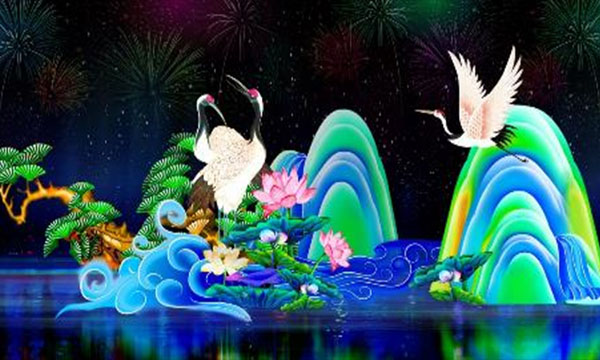
07Live as Long as the Pine & the Crane
In China, pine trees are associated with long life. They have an extremely strong life-force, withstanding winter’s cold and summer’s heat, not dying in frost or snow. People in China used to see the long-lived pine as a symbol of perennial youth and long life. The crane is seen as a bird of good omen by Chinese, ranking second only to the legendary fenghuang, and is associated with long life. “Hèshòu” (“Crane lifespan”) and “Yánnián” (“Longevity”) are terms used to wish someone a long life.
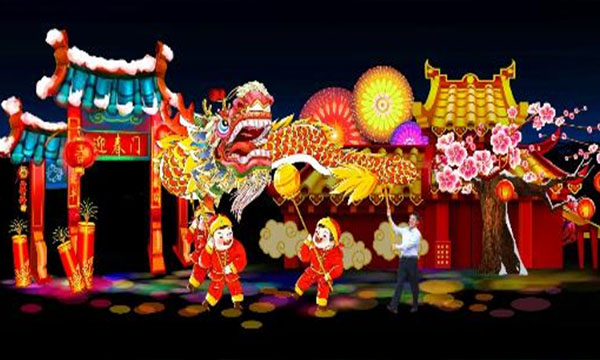
08Dragon Dance to Celebrate Spring
A dragon dance is a traditional dance in the Sinosphere, depicting a dragon chasing after a jade gem. The giant lantern represents the dancing dragon, moving up and down, left and right, in time with a gong and drum, operated by multiple people. The dragon dance is a traditional event held at the start of spring in the traditional calendar, or the autumn harvest festival. It is held to pray for rain or for a good harvest.

09Monkey King and the Feast of Peaches
On the way to see the utopia of the Peach Blossom Land in front of the Kaizan Hall, we first pass through rows of his magical staff. This is recorded in Journey to the West, one of the Four Chinese Classics. The Monkey King was appointed Guardian of the Heavenly Peach Garden, but was angered that he was not invited to the banquet given by the Queen Mother of the West. He stole a peach from the garden and ate it, then disrupted the festivities. Later, he was banished to the human world as punishment, where he was tasked with accompanying the monk Tripitaka on his long and dangerous quest to fetch the Buddhism scriptures from India.
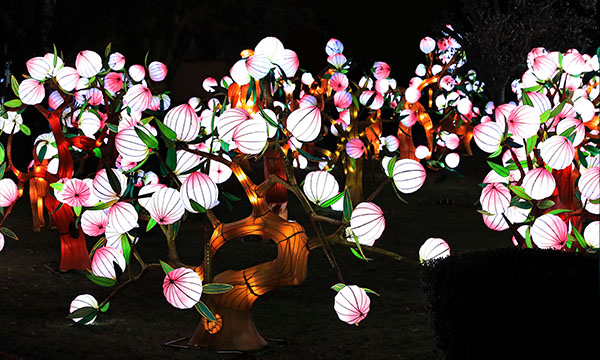
10The Peach Blossom Land
Tao Yuanming, a poet from China’s Six Dynasties period, described the Peach Blossom Land in his work The Peach Blossom Spring. This was a land apart from the human world, a different world; rich and prosperous, peaceful, and surrounded by peach forests. The peach is a common motif in Buddhism, and the peaches of immortality (pántáo) are seen, much like the golden apples of Norse myth, as the source of the eternal youth and immortality of the gods.
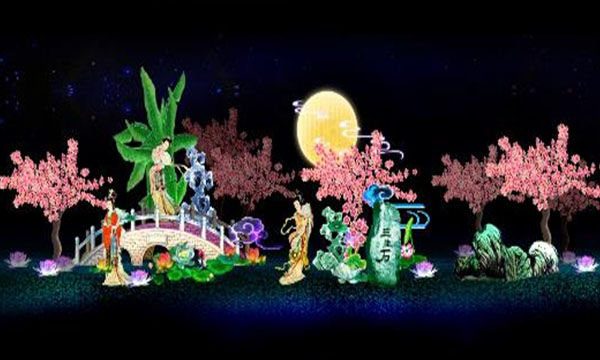
11Handmaidens Flower-Viewing
Combining different lanterns, this represents a scene where court handmaidens are viewing blossoms in the garden at night, under a full moon. In traditional paintings of beauties in China, handmaidens were a common subject. “Sānshēng” is essentially the same as “sānshì,” a Buddhist term that refers to the three lives–before you are born, your current life, and your next life. It means that in the past, the present, and the future, beautiful people and scenery will always follow us.

12The Deer King Jataka
A gorgeous picture scroll in the evening temple grounds based on the motif of the Deer King Jataka painted as a mural on the walls of the Mogao Caves of Dunhuang during China’s Northern Wei Dynasty. The Deer King Jataka is a story included in the Jataka Tales, a collection of stories about Gautama in his previous lives. There is an ancient and deep connection between deer and Buddhism, and Indian and Chinese elements are cleverly fused in the screen.
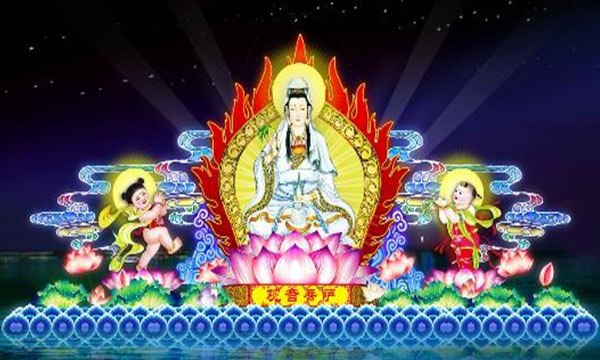
13Guanyin of Nanshan
The statue of Guanyin (Kannon in Japanese) near the Nanshan Temple, Sanya, on Hainan Island in China faces the South China Sea, and represents the blessing and protection of Guanyin towards China and the world as a whole. Guanyin holds a purification bottle in the left hand, and a willow branch in the right, forming a mudra. Willows are believed to prevent disasters and heal sickness, while the dew inside the purification bottle is believed to be able to spread happiness to humanity.
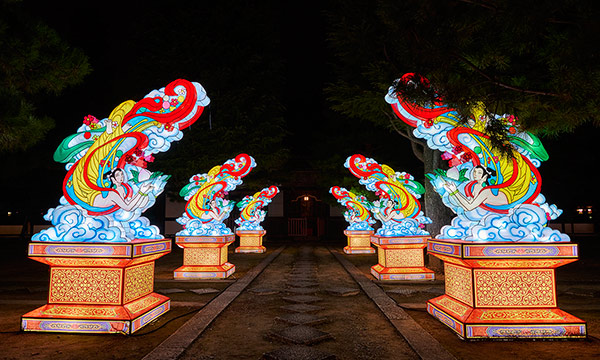
14The Apsara of Dunhuang
In Buddhism, flying celestial beings are known as apsara. The apsara depicted on murals in the Mogao Caves of Dunhuang were created at the same time the caves were dug. Over more than a millennium and ten dynasties, they are as bright as they ever were, displaying the aesthetics of Chinese art. The fusion of Buddhism and art through the apsara with the rapid spread of the religion in China is recreated here.
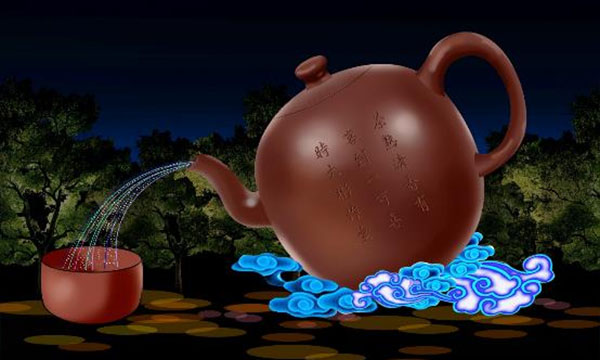
15Teapot of the Zen Monk Yinyuan
Yinyuan (Ingen in Japanese) was a Zen monk who came to Japan from China in 1654, in the early Edo period, and brought with him the vessel known as the teapot. His teapot was made from purple clay from the Yixing Kiln, and is believed to have been made by Shi Dabin, the famous Chinese tea pottery master. The body has “Pot Made by Shi Dabin,” the seal of Shi Dabin, on it. Yinyuan’s style of making tea was to add tea leaves to boiling water, a style known in China at the time as Tang Tea.
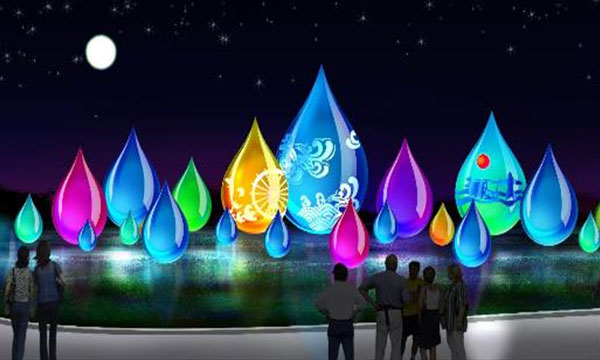
16The Best is Like Water
Found in the 8th chapter of Laozi’s Dao De Jing. “The best character is like water. The water’s goodness is that it benefits the myriad things but does not quarrel, and it willingly goes to where others hate. Thus it is almost like the Dao.” If we live like water, we shall arrive at true Zen enlightenment.
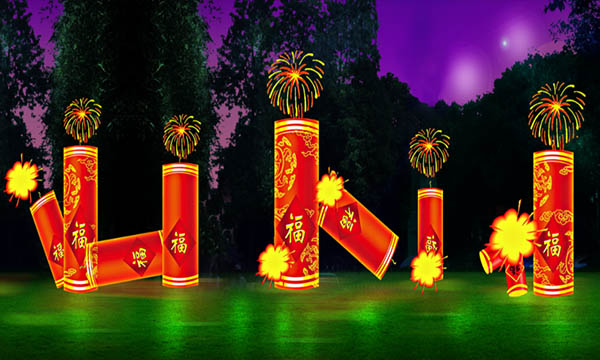
17Sounds of Firecrackers
In China, there is a custom of filling bamboo tubes with gunpowder and lighting them off to expel evil spirits on holidays or at celebrations. From this, they were called “baozhu” (Jp: bakuchiku), “exploding bamboo.” Today, we use ones made of paper filled with gunpowder, held at the end of sticks. They are let off in each household on the first day of the Lunar New Year, filling the streets with the echoes of firecrackers and helping raise the New Year mood.

18Prosperous Noble Peony
In the language of flowers, the peony stands for the authority of a king, nobility, shyness, and bashfulness. Even a single bloom in a vase looks grand, which is why the flower is associated with quality and nobility. In their home country of China, it is given many names like “huashen” (god of flowers) and “huawang” (king of flowers) that reflect its high rank.
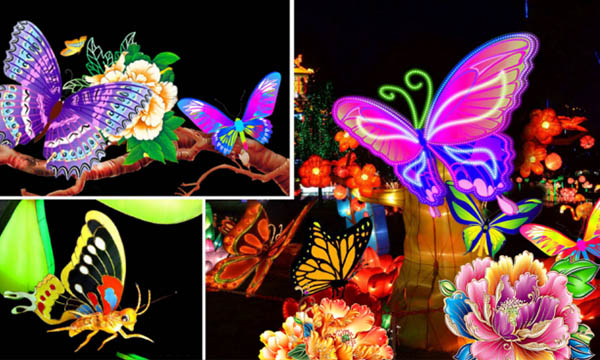
19Field of Butterflies
A beautiful flower field and butterflies flitting around it. A wonderful natural landscape of wild plants and insects.
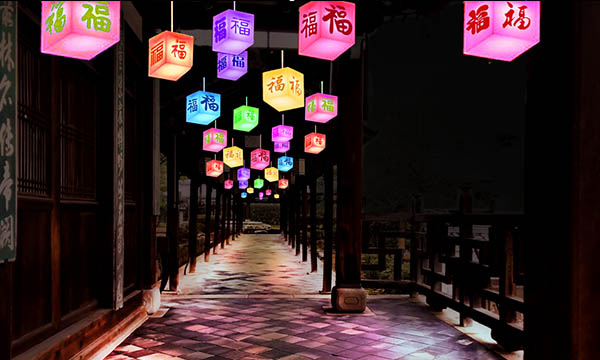
20Receiving Every Happiness
The Chinese word “wanfu” (Jp: manpuku) means “uncountable amounts of happiness.” It is a prayer for the happiness of visitors.
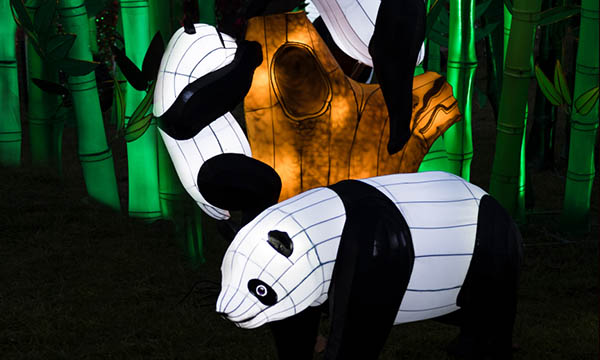
21Panda Paradise
The pandas of China are a gift from heaven everyone loves. So innocent and charming. Come up close to enjoy the expressions on the faces of these panda lanterns.

22Swings
Play equipment based on the Chinese saying “wanshou qianqiu” or “endless and vast longevity” that started with prayers for the long life of Emperor Wu of the Han Dynasty.Have fun on these swings. As they swing and collide, they change color.
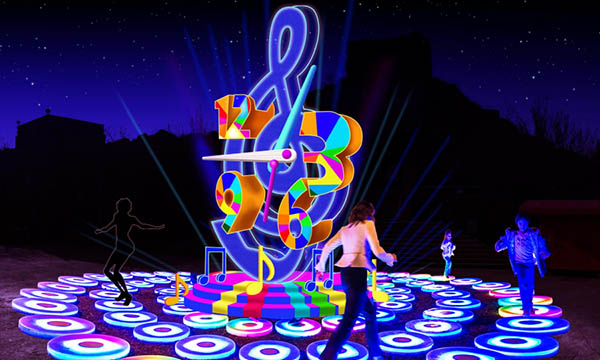
23LED Floor Piano
Stepping on it makes music and changes the colors.
TEMPLE MAP
